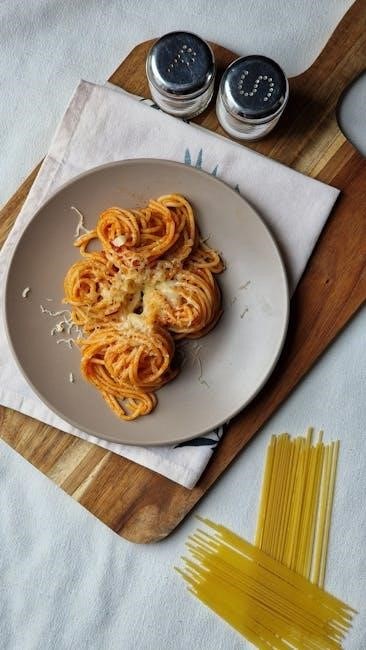The Cooking Merit Badge Worksheet is a comprehensive guide for Scouts to organize tasks and meet requirements efficiently. It aligns with 2025 standards, offering structured planning tools for meals, safety protocols, and skill development. This PDF workbook ensures Scouts track progress, understand expectations, and prepare thoroughly for counselor meetings, making the merit badge journey seamless and productive.
1.1 Overview of the Cooking Merit Badge
The Cooking Merit Badge is designed to teach Scouts essential skills in food preparation, safety, and nutrition. It covers health and safety practices, cooking methods, meal planning, and outdoor cooking techniques. Scouts learn to prepare balanced meals, understand dietary needs, and handle food safely. The badge emphasizes practical experience, requiring Scouts to plan and cook multiple meals, including breakfast, lunch, dinner, and desserts. It also includes outdoor cooking challenges, ensuring a well-rounded understanding of culinary skills and their application in various settings.
1.2 Importance of the Worksheet in Earning the Badge
The worksheet is a vital tool for Scouts, providing a structured approach to track progress and fulfill requirements for the Cooking Merit Badge. It ensures organization by outlining tasks, meal plans, and safety protocols, making it easier to demonstrate mastery. The worksheet aligns with official guidelines, helping Scouts prepare for counselor meetings and ensuring no requirement is overlooked. By using the worksheet, Scouts can efficiently document their journey, reflecting their understanding and practical skills in cooking, safety, and nutrition.
1.3 Key Features of the PDF Workbook
The Cooking Merit Badge Worksheet PDF is a 33-page document designed to guide Scouts through earning the badge. It includes fillable fields, meal planning templates, and checklists to track progress. The workbook covers essential topics like food safety, nutrition, and cooking techniques, aligning with 2025 requirements. Features include space for recording recipes, shopping lists, and reflections on cooking experiences. It also offers practical tips for outdoor cooking and sanitary practices, ensuring Scouts are well-prepared for counselor evaluations and skill demonstrations.
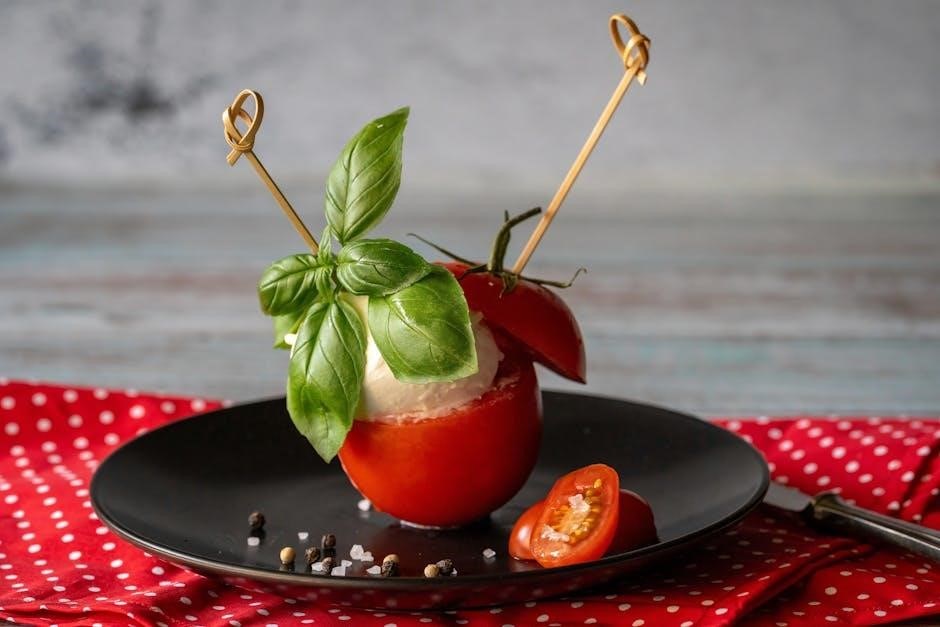
Health and Safety in Cooking
The Cooking Merit Badge emphasizes identifying hazards, understanding first aid, and preventing cross-contamination. Scouts learn to anticipate and mitigate risks, ensuring a safe cooking environment for themselves and others.
2.1 Identifying Common Hazards in Cooking
Cooking involves inherent risks such as burns, cuts, and fires. Scouts must identify these hazards and understand how to anticipate and prevent them. Proper handling of sharp objects, safe use of stoves, and awareness of slippery surfaces are key. Additionally, electrical appliances and hot pans pose risks. Scouts learn to mitigate these dangers through proper preparation, safe practices, and constant vigilance. Understanding these hazards is crucial for ensuring a safe cooking environment and preventing accidents. This knowledge forms the foundation of responsible cooking skills.
2.2 First Aid for Cooking-Related Injuries
Cooking-related injuries, such as burns, cuts, and scalds, require immediate attention. For burns, cool the area with running water for 10 minutes and cover with a clean cloth. Never use ice or butter. For cuts, apply direct pressure to stop bleeding and clean with soap and water. For scalds, treat similarly to burns. Always stay calm and seek professional medical help if injuries are severe. Proper first aid knowledge is essential for ensuring safety in the kitchen and preventing minor accidents from becoming serious. Clean environments and quick responses are vital.
2.3 Preventing Cross-Contamination and Foodborne Illnesses
Preventing cross-contamination and foodborne illnesses is crucial in cooking. Always separate raw, cooked, and ready-to-eat foods to avoid mixing harmful bacteria. Wash hands thoroughly with soap and water before handling food and after touching raw ingredients. Clean utensils, cutting boards, and surfaces regularly with sanitizing solutions. Store foods at appropriate temperatures, keeping perishables below 40°F and cooked foods above 140°F. Label and date leftovers, discarding them if they show signs of spoilage. Following these practices ensures a safer kitchen environment and reduces the risk of foodborne illnesses.
Cooking Methods and Techniques
Mastery of cooking involves understanding essential methods like baking, boiling, frying, and roasting. These techniques, applied across breakfast, lunch, dinner, and desserts, ensure versatile and delicious meal preparation while emphasizing safety and proper food handling to achieve optimal results.
3.1 Overview of the 10 Essential Cooking Methods
The 10 essential cooking methods are fundamental techniques Scouts must master for the Cooking Merit Badge. These include baking, boiling, steaming, frying, sautéing, roasting, grilling, stir-frying, simmering, and braising. Each method requires understanding temperature, timing, and tool usage to achieve desired results. The worksheet provides detailed explanations and practical exercises to ensure proficiency in these methods, enabling Scouts to prepare a variety of dishes confidently and safely, both at home and outdoors.
3.2 Mastering Techniques for Breakfast, Lunch, Dinner, and Desserts
The worksheet guides Scouts in mastering essential cooking techniques for every meal. For breakfast, Scouts learn to prepare dishes like scrambled eggs or pancakes. Lunches focus on balanced meals, such as sandwiches or salads. Dinners involve proteins, vegetables, and sides, while desserts introduce sweet treats like cookies or fruit salads. The workbook provides recipes and tips to refine skills, ensuring Scouts can confidently prepare nutritious and delicious meals for themselves and others, fostering culinary creativity and independence.
3.3 Using Appliances and Tools Safely
The worksheet emphasizes safe handling of kitchen appliances and tools, such as knives, stovetops, and ovens. Scouts learn proper techniques for using utensils, ensuring cleanliness, and maintaining equipment. The guide highlights preventive measures to avoid accidents, like keeping knives sharp and storing tools correctly. By following these practices, Scouts develop habits that promote safety and efficiency in the kitchen, reducing risks while cooking and preparing meals effectively.
Meal Planning and Nutrition
This section covers creating balanced meals using MyPlate guidelines, understanding caloric needs, and planning for dietary preferences. The worksheet provides tools for Scouts to apply these concepts effectively, ensuring nutritious and varied meal plans while staying within budget.
4.1 Creating a Balanced Meal Plan Using MyPlate Guidelines
Scouts must plan 16 meals, including 4 breakfasts, lunches, dinners, and 2 desserts/snacks, ensuring variety across different protein sources and food groups. Each meal plan should include a variety of fruits, vegetables, whole grains, and dairy products. Scouts will also check for dietary restrictions and preferences. Using MyPlate Guidelines, they will create balanced meals, ensuring each plan covers all food groups and promotes healthy eating habits. This step helps Scouts understand nutritional needs and apply them practically in meal preparation and planning.
4.2 Calculating Caloric Needs Based on Activity Levels
Scouts must track their daily activity levels and calculate caloric needs over five days. Using the MyPlate guidelines, they discuss with their counselor how to balance meals based on energy expenditure. This step teaches Scouts to understand how activity affects nutrition and portion sizes. By applying these calculations, Scouts can plan meals that meet their dietary needs while promoting healthy eating habits tailored to their lifestyle. This practical skill helps Scouts make informed food choices for themselves and others.
4.3 Planning Menus for Different Dietary Requirements
Scouts learn to create menus accommodating various dietary needs, such as vegetarian, gluten-free, or low-sodium. Using the worksheet, they identify requirements and plan balanced meals. This skill ensures inclusivity and understanding of diverse nutritional needs. Scouts practice adapting recipes and selecting ingredients to meet specific dietary restrictions, fostering empathy and culinary versatility. The workbook guides them in presenting these meal plans, reinforcing their ability to cater to different preferences and requirements effectively.
Grocery Shopping and Budgeting
The worksheet helps Scouts plan shopping lists, understand food costs, and budget effectively. It guides them in making smart purchasing decisions while ensuring meal requirements are met.
5.1 Creating a Shopping List for Meal Plans
The worksheet guides Scouts in creating detailed shopping lists based on their planned meals. It helps organize ingredients, portion sizes, and dietary needs, ensuring all items are accounted for. Scouts learn to prioritize essentials, avoid waste, and stay within budget. The list aligns with meal plans, making grocery shopping efficient and stress-free. This step is crucial for successful meal preparation and teaches Scouts practical skills in planning and budgeting for nutritious meals.
5.2 Understanding Food Costs and Budgeting
The worksheet helps Scouts estimate food costs and allocate funds wisely for meal plans. It encourages comparing prices, considering portion sizes, and budgeting for ingredients. Scouts learn to balance nutritional needs with financial constraints, ensuring meals are affordable and sustainable. This section teaches practical skills in managing money and making smart purchasing decisions, aligning with the worksheet’s goal of fostering independence and responsibility in cooking and meal planning;
5.3 Tips for Smart Grocery Shopping
The worksheet provides practical tips for efficient grocery shopping, such as creating detailed shopping lists to avoid impulse buys and comparing prices for better value. Scouts learn to identify seasonal produce for cost savings and understand unit pricing to make informed decisions. The guide also emphasizes buying in bulk for non-perishables and using coupons or store rewards. These strategies help Scouts shop smart, stay within budget, and ensure they have all necessary ingredients for their meal plans, fostering resourcefulness and financial literacy.
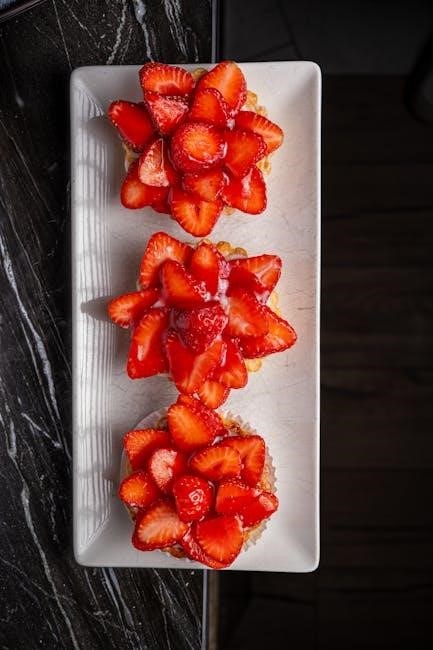
Cooking at Home
Cooking at home is a vital part of earning the Cooking Merit Badge, focusing on preparing balanced meals for family members and mastering meal timing for proper serving.
6.1 Preparing and Serving Meals for Family Members
Preparing and serving meals for family members is a core requirement, teaching Scouts essential cooking skills and responsibility. Scouts must plan, prepare, and serve balanced meals, ensuring safety and nutrition. This includes selecting recipes, shopping for ingredients, and timing meals for proper serving. The worksheet guides Scouts in documenting their experiences, reflecting on challenges, and improving their culinary abilities. By involving family members, Scouts learn teamwork and adapt to diverse preferences, fostering confidence in their cooking abilities and meeting merit badge standards effectively.
6.2 Timing Meals for Proper Serving
Timing meals accurately is crucial for a successful dining experience. Scouts learn to coordinate meal components, ensuring each dish is ready simultaneously. The worksheet provides strategies for scheduling preparation tasks, from starting with longer-cooking items to plating just in time. Proper timing prevents overcooking, maintains food safety, and enhances presentation. By mastering this skill, Scouts deliver meals that are both nutritious and enjoyable, meeting the merit badge requirements and impressing their families with well-organized and deliciously timed meals every time they cook.
6.3 Documenting Home Cooking Experiences
Documenting home cooking experiences is essential for reflection and improvement. Scouts are encouraged to record meal planning, preparation, and serving details in their worksheet. This includes noting recipes, cooking methods, and the outcome of each dish. Photos and feedback from family members can also be included. Regular documentation helps Scouts track their progress, identify areas for growth, and demonstrate their skills to merit badge counselors. This habit fosters accountability and provides a valuable record of their culinary journey.
Outdoor Cooking and Safety
Outdoor cooking requires Scouts to prepare meals in nature, ensuring safety and proper food handling. Building a fireplace and managing food storage are key skills emphasized in the worksheet.
7.1 Preparing Meals on a Campout
Preparing meals on a campout involves planning balanced menus using the MyPlate guide, creating shopping lists, and tracking food costs. Scouts learn to handle food safely, store it properly to avoid spoilage, and cook using camping tools like fireplaces or portable stoves. The worksheet guides Scouts in documenting their outdoor cooking experiences, ensuring they meet requirements and demonstrate mastery of campout meal preparation skills while maintaining safety and hygiene standards.
7.2 Building a Fireplace for Outdoor Cooking
Building a fireplace for outdoor cooking involves selecting a safe location, clearing the area, and using natural materials like rocks or logs. Scouts learn to construct a fire pit, ensuring proper ventilation and safety measures. The worksheet guides Scouts in documenting their fireplace construction process, adhering to outdoor cooking safety standards, and understanding how to maintain and extinguish fires responsibly. This skill is essential for successful campout meal preparation and aligns with merit badge requirements for outdoor cooking proficiency.
7.3 Handling Food in Outdoor Environments
Handling food in outdoor environments requires careful attention to safety and hygiene. Scouts must store food and waste properly to avoid attracting wildlife. The worksheet guides Scouts in understanding how to maintain food sanitation, use appropriate containers, and dispose of waste responsibly. Proper handwashing techniques and safe food storage methods are emphasized to prevent contamination and foodborne illnesses. These practices ensure safe and healthy outdoor cooking experiences, aligning with merit badge requirements for outdoor food management.
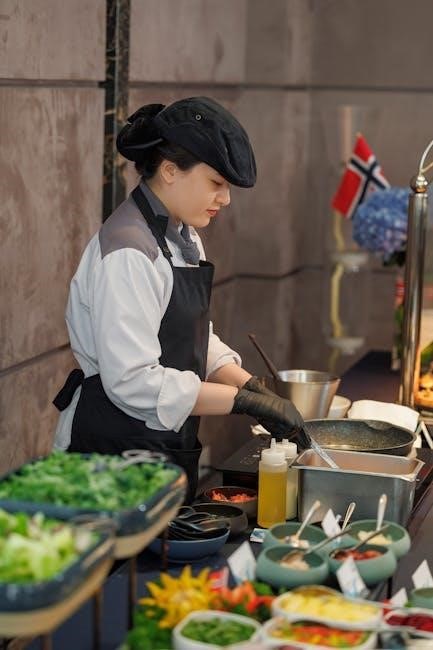
Desserts and Snacks
This section focuses on planning, preparing, and presenting delicious desserts and healthy snacks. Scouts learn creative recipes, portion control, and presentation techniques to enhance their culinary skills.
8.1 Planning and Preparing Desserts
Planning and preparing desserts involves selecting recipes, understanding ingredients, and mastering techniques. Scouts learn to create balanced desserts, considering flavors, textures, and presentation. The worksheet guides Scouts in choosing recipes, calculating ingredient quantities, and timing preparation. Emphasis is placed on safety, proper utensil use, and creative presentation. Scouts also explore nutritional considerations and portion control. This step helps develop culinary skills and confidence in preparing sweet treats for various occasions, ensuring a delightful finish to any meal.
8.2 Creating Healthy Snack Options
Creating healthy snack options involves balancing nutrition and flavor while adhering to dietary needs. Scouts learn to select whole foods, fruits, nuts, and vegetables, avoiding processed items. The worksheet guides Scouts in planning snacks that align with MyPlate guidelines, ensuring variety and nutrient balance. Practical tips are provided for portion control, safe food handling, and creative presentation. This skill helps Scouts develop habits for making nutritious choices, benefiting both themselves and others in various settings, from home to outdoor adventures.
8.3 Presentation and Taste Evaluation
Presentation and taste evaluation are crucial steps in mastering culinary skills. Scouts learn to present dishes attractively, considering portion control and visual appeal. They evaluate meals based on taste, texture, and flavor balance. The worksheet guides Scouts in documenting their experiences, including feedback from others. This process helps refine recipes and techniques, fostering an appreciation for the importance of quality and presentation in cooking. Scouts also explore how different ingredients and methods impact the final dish’s appearance and taste.
Food Storage and Sanitation
Proper food storage and sanitation are essential for maintaining safety and quality. Scouts learn techniques like refrigeration, hygiene practices, and cleaning utensils to prevent contamination and spoilage.
9.1 Proper Food Handling and Storage Techniques
Proper food handling and storage are crucial for maintaining safety and quality. Scouts learn to refrigerate perishables promptly, freeze items correctly, and store dry goods in airtight containers. Techniques include labeling, dating stored items, and ensuring cleanliness to prevent contamination. Understanding First-in, First-out storage helps reduce waste and spoilage. These practices are essential for preventing foodborne illnesses and ensuring meals remain fresh and safe to consume. Proper food handling is a key component of responsible cooking and meal preparation.
9.2 Sanitary Practices in the Kitchen
Sanitary practices are essential for a safe cooking environment. Scouts learn to wash hands thoroughly before handling food, clean and disinfect surfaces, and sanitize utensils. Proper techniques include avoiding cross-contamination by separating raw, cooked, and ready-to-eat foods. Regularly cleaning spills and ensuring all tools are germ-free are emphasized. These habits prevent foodborne illnesses and maintain a hygienic workspace. By mastering these practices, Scouts ensure their meals are prepared safely and responsibly, adhering to health guidelines.
9.3 Cleaning Utensils and Dishes
Cleaning utensils and dishes is crucial for maintaining a hygienic kitchen. Scouts learn to wash items with hot water and dish soap, rinse thoroughly, and sanitize using heat or disinfectants. Utensils should be dried to prevent water spots and stored in clean areas. Regularly cleaning sponges and dishcloths reduces bacterial growth. Proper dishwashing prevents food residue buildup and ensures all tools remain safe for future use, fostering a clean and organized cooking environment.
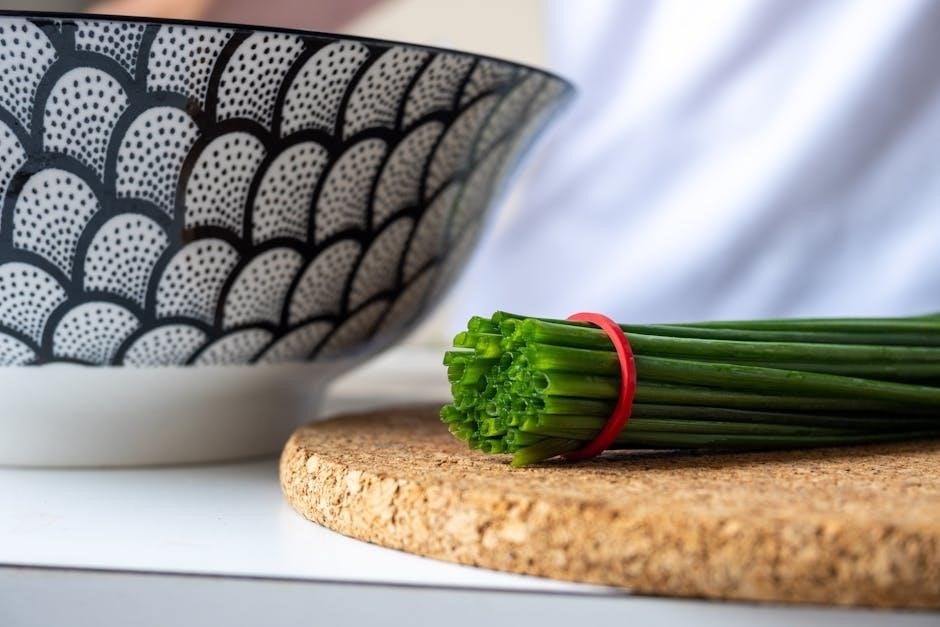
Evaluating Cooking Skills
Evaluating cooking skills involves self-assessment, counselor feedback, and continuous improvement. Scouts reflect on their abilities, receive guidance, and refine techniques to enhance their cooking proficiency and confidence.
10.1 Self-Assessment of Cooking Abilities
Self-assessment is crucial for evaluating cooking skills. Scouts reflect on their meal preparation, presentation, and taste, using the worksheet to track progress. They evaluate food safety practices and culinary techniques, identifying strengths and areas for improvement. This process fosters accountability and helps Scouts set goals for refining their skills. By critically assessing their work, Scouts gain confidence and develop a deeper understanding of their cooking abilities, which is essential for achieving the merit badge requirements and beyond.
10.2 Feedback from Counselors and Adults
Feedback from counselors and adults is essential for Scouts to refine their cooking skills. Using the worksheet, counselors evaluate meal planning, cooking techniques, and food safety adherence. They provide constructive criticism on presentation, taste, and creativity, helping Scouts address weaknesses. Adults also offer insights into improving recipes and kitchen efficiency. This collaborative process ensures Scouts meet merit badge requirements and gain confidence in their abilities. Regular feedback sessions guide Scouts toward continuous improvement and mastery of cooking skills.
10.3 Continuous Improvement in Cooking
Continuous improvement in cooking involves refining skills through practice and feedback. Scouts are encouraged to experiment with new recipes and techniques, exploring various cuisines and ingredients. By reflecting on past cooking experiences, Scouts can identify areas for growth, such as meal presentation or flavor balance. Regularly reviewing the worksheet helps track progress and set achievable goals. Embracing challenges and learning from mistakes fosters confidence and mastery, ensuring Scouts become proficient cooks capable of creating delicious and nutritious meals for themselves and others. This process builds lifelong culinary skills.
The Role of the Merit Badge Counselor
The merit badge counselor verifies that Scouts meet all requirements by demonstrating skills like cooking meals and handling food safely, ensuring hands-on competence and understanding of the material.
11.1 Responsibilities of the Counselor
The merit badge counselor is responsible for verifying that Scouts complete all requirements accurately and safely. They review worksheets, assess cooking skills, and ensure understanding of food safety and nutrition. Counselors provide constructive feedback and guidance, helping Scouts improve their techniques. They also ensure Scouts demonstrate hands-on proficiency in meal preparation and food handling. The counselor’s role is to support learning and confirm that Scouts meet the badge’s standards, fostering a meaningful and educational experience.
11.2 Tips for Working with Your Counselor
To effectively work with your counselor, schedule regular meetings to review progress and discuss challenges. Prepare for sessions by organizing your workbook and practicing skills in advance. Ask questions to clarify expectations and seek feedback to improve. Maintain open communication and be proactive in addressing any gaps in your knowledge or skills. Building a positive, collaborative relationship with your counselor ensures a smooth path to earning the Cooking Merit Badge and fosters a deeper understanding of culinary skills.
11.2 Understanding Counselor Expectations
Understand that counselors assess your ability to demonstrate skills and knowledge, not just complete tasks. They expect you to apply learning, not just follow instructions. Regular communication and preparation are key to meeting their expectations. Counselors aim to ensure you grasp the material deeply, so engage actively and ask questions. Their feedback is invaluable for improvement, so seek it regularly. Remember, counselors guide but also require independent effort and understanding to award the merit badge, ensuring true mastery of cooking skills.
The Cooking Merit Badge Worksheet is an invaluable tool, guiding Scouts through requirements and fostering essential cooking skills. It promotes food safety, nutrition, and meal planning, ensuring a comprehensive learning experience that extends beyond the badge, encouraging lifelong cooking confidence and creativity.
12.1 Final Thoughts on Earning the Cooking Merit Badge
Earning the Cooking Merit Badge is a rewarding experience that equips Scouts with essential culinary skills, safety knowledge, and nutrition understanding. The worksheets provide a structured path to completion, ensuring Scouts master meal planning, food safety, and diverse cooking methods. By following the guide, Scouts gain confidence in the kitchen, preparing them for lifelong cooking adventures. The merit badge fosters independence, creativity, and healthy habits, making it a valuable achievement for any Scout.
12.2 The Value of the Worksheet in the Learning Process
The Cooking Merit Badge Worksheet is an invaluable tool that streamlines the learning process, helping Scouts stay organized and focused. It provides clear guidelines, templates, and tracking mechanisms to ensure all requirements are met. By breaking down tasks into manageable sections, the worksheet aids in understanding key concepts like meal planning, food safety, and cooking techniques. It also serves as a record of progress, allowing Scouts to reflect on their journey and confidently demonstrate their skills to counselors, reinforcing their mastery of essential culinary knowledge.
12.3 Encouragement for Future Cooking Adventures
Earning the Cooking Merit Badge is just the beginning of a lifelong culinary journey. The skills and confidence gained through this process will inspire Scouts to explore new recipes, experiment with flavors, and host memorable gatherings. Whether it’s mastering global cuisines or creating innovative dishes, the foundation built here will foster a passion for cooking. Encourage Scouts to continue applying their knowledge, sharing meals with others, and embracing the joy of culinary creativity, as the world of cooking offers endless possibilities for growth and delight.
